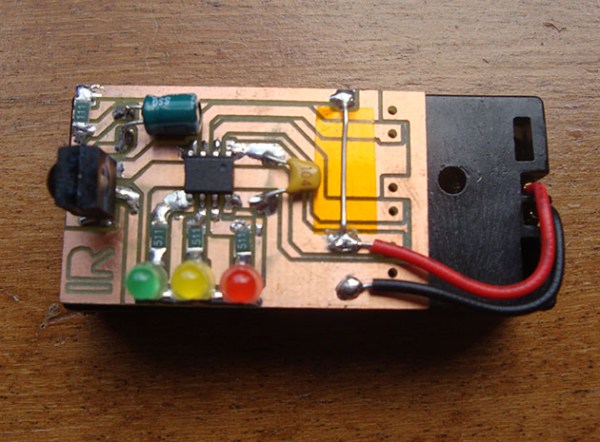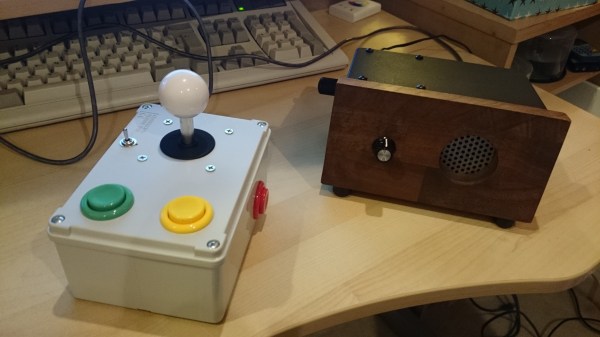Editor’s note: Thar be spoilers below.
Showing any sort of ‘hacking’ on either the big screen or the small often ends in complete, abject failure. You only need to look at Hackers with its rollerblading PowerBooks, Independance Day where the aliens are also inexplicably using PowerBooks, or even the likes of Lawnmower Man with a VR sex scene we keep waiting for Oculus to introduce. By design, Mr Robot, a series that ended its first season on USA a month ago, bucks this trend. It does depressed, hoodie-wearing, opioid-dependant hackers right, while still managing to incorporate some interesting tidbits from the world of people who call themselves hackers.
Desktop Environments
In episode 0 of Mr Robot, we’re introduced to our hiro protagonist [Elliot], played by [Rami Malek], a tech at the security firm AllSafe. We are also introduced to the show’s Macbeth, [Tyrell Wellick], played by Martin Wallström]. When these characters are introduced to each other, [Tyrell] notices [Elliot] is using the Gnome desktop on his work computer while [Tyrell] says he’s, “actually on KDE myself. I know [Gnome] is supposed to be better, but you know what they say, old habits, they die hard.”
![[Elliot], running Kali with Gnome](https://hackaday.com/wp-content/uploads/2015/08/elliot-hacks.jpg?w=400)
Subtle, yes, but in one short interaction between [Elliot] and [Tyrell], we see exactly where each is coming from. [Elliot] stands for freedom of software and of mind, [Tyrell] is simply toeing the company line. It’s been fifteen years since message boards have blown up over the Free Software Foundation’s concerns over KDE, but the sentiment is there.
Biohacking
There’s far more to a hacker ethos than having preferred Linux desktop environments. Hacking is everywhere, and this also includes biohacking, In the case of one Mr Robot character, this means genetic engineering.
In one episode of Mr Robot, the character Romero temporarily gives up his power in front of a keyboard and turns his mind to genetics. He “…figured out how to insert THC’s genetic information code into yeast cells.” Purely from a legal standpoint, this is an interesting situation; weed is illegal, yeast is not, and the possibilities for production are enormous. Yeast only requires simple sugars to divide and grow in a test tube, marijuana actually requires a lot of resources and an experienced staff to produce a good crop.
Life imitates art, but sometimes the reverse is true. Just a few weeks after this episode aired, researchers at Hyasynth Bio announced they had genetically modified yeast cells to produce THC and cannabidiol.
The promise of simply genetically modifying yeast to produce THC is intriguing; a successful yeast-based grow room could outproduce any plant-based operation, with the only input being sugar. Alas, the reality of the situation isn’t quite that simple. Researchers at Hyasynth Bio have only engineered yeast to turn certain chemical precursors into THC. Making THC from yeast isn’t yet as simple as home brewing an IPA, but it’s getting close, and a great example of how Mr Robot is tapping into hacking, both new and old.
Why Aren’t We Arguing More About This?
The more we ruminate on this show, the more there is to enjoy about it. It’s the subtle background that’s the most fun; the ceiling of the chapel as it were. We’re thinking of turning out a series of posts that works through all the little delights that you might have missed. For those who watched and love the series, what do you think? Perhaps there are other shows worthy of this hacker drill-down, but we haven’t found them yet.



 The Hardware in Satellite receivers is running Linux. They use a card reader to pull in a Code Word (CW) which decodes the signal coming in through the satellite radio.
The Hardware in Satellite receivers is running Linux. They use a card reader to pull in a Code Word (CW) which decodes the signal coming in through the satellite radio.



 While it’s almost cliché to say they don’t make things like they used to, this week’s Retrotechtacular offers fairly conclusive proof that, at the very least, they used to put more time and effort into manufacturing consumer electronics. Gather your homemade wisecrackin’ robots and settle in front of
While it’s almost cliché to say they don’t make things like they used to, this week’s Retrotechtacular offers fairly conclusive proof that, at the very least, they used to put more time and effort into manufacturing consumer electronics. Gather your homemade wisecrackin’ robots and settle in front of 








